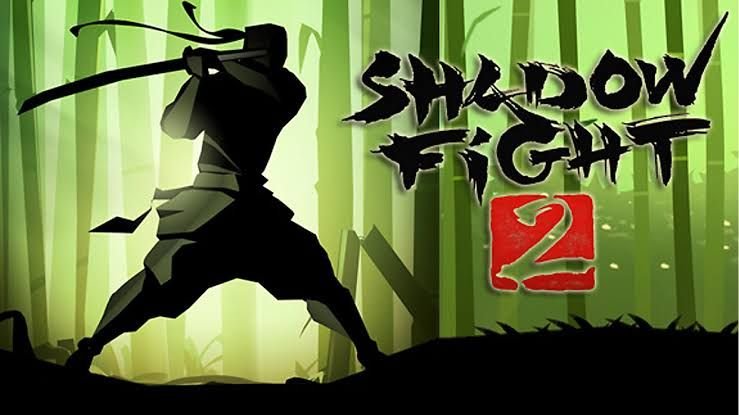Introduction to Shadow Fight

Shadow Fight is a popular series that has captivated gamers since its inception. Developed by Nekki, this franchise originated with a mobile game that premiered in 2011. It quickly gained traction due to its unique blend of role-playing game (RPG) elements and traditional fighting mechanics. The immersive combat system, coupled with an intriguing visual style featuring shadowy opponents, creates an atmosphere that draws players deep into the world of martial arts.
As the game evolved, it transitioned from a simple mobile platform to a more complex experience available on consoles and PCs. This evolution has allowed Shadow Fight to expand its reach and appeal, providing an extensive gameplay experience that accommodates a diverse range of players. Gamers are attracted not only by the combat mechanics but also by the rich narrative that accompanies the fights, which focuses on mastering martial arts and overcoming formidable foes.
The premise of battling shadowy adversaries sets the stage for a unique gaming experience. Each character, crafted with intricate details and varying fighting styles, embodies different martial arts techniques, making combat encounters both diverse and challenging. The atmospheric graphics enhance the overall experience, as the shadows and silhouettes intertwine, creating an engaging backdrop for the intense battles. Moreover, the strategic element of upgrading skills and equipment adds depth to the gameplay, encouraging players to invest time in character development.
Overall, Shadow Fight has successfully blended traditional martial arts with engaging RPG gameplay, allowing players to immerse themselves in a world of shadow combat. This introduction lays the groundwork for a more detailed exploration of the game mechanics, character customization, and overall player experience that defines the Shadow Fight franchise.
Gameplay Mechanics and Features
Shadow Fight offers a richly layered combat system that engages players through various gameplay mechanics designed to emulate the fluidity and intensity of martial arts. At its core, the combat system allows players to engage in fierce battles, utilizing a combination of strikes, blocks, and special moves. One of the standout features is the ability to seamlessly integrate different fighting styles. Each character possesses unique abilities, enabling players to experiment with diverse techniques and strategies tailored to their preferred combat approach.
Character customization plays a pivotal role in enhancing the gameplay experience. Players can equip their avatars with a wide array of weapons and gear that significantly impact their fighting capabilities. The RPG elements embedded within Shadow Fight contribute to a sense of progression; as players advance, they can unlock new skills and upgrade their abilities, fostering deeper engagement with the game. The careful balance between offense and defense requires players to master timing and strategic execution, which adds a cerebral dimension to the typical action combat genre.
The game’s environments are meticulously designed, providing immersive battlegrounds that reflect the themed worlds of the titular shadow fighters. These environments not only enhance the visual appeal but also introduce various tactical elements, as players must adapt their strategies to the landscape of each fight. Additionally, the multiplayer options, where available, enrich the gameplay by allowing players to test their skills against real opponents. This competitive element can influence character development, as encounters with other players push for adaptability and personal evolution in fighting styles. In essence, the game masterfully combines character progression, strategic depth, and customizable engagement to deliver a compelling shadow combat experience.
Visual and Audio Experience
The visual and audio components of Shadow Fight play a pivotal role in crafting an immersive gaming experience. The game’s graphics are characterized by their unique blend of 2D animation and stylized artwork, which not only delineates the characters but also breathes life into the settings where intense battles take place. Each character is meticulously designed, showcasing distinct animations that reflect their individual fighting styles and personalities. The fluidity of these animations is particularly noteworthy, as it creates a seamless transition between offensive and defensive moves, thereby enhancing the overall combat experience.
The backgrounds are equally impressive, effectively transporting players into diverse environments that range from dark, foreboding landscapes to vibrant settings filled with intricate details. Each arena presents a visual story that complements the shadowy theme of the game. The use of color and shadow play enhances the impact of combat, making each fight feel more dynamic and engaging. The artistry is not solely limited to characters and backgrounds; the visual effects during combat—including striking impacts and special moves—are visually captivating, further enhancing the player’s sense of action.
Audio elements are instrumental in elevating the overall experience of Shadow Fight. The background music, which varies in tone and intensity depending on the context of the fight, adds depth to the gameplay, helping set the mood for each encounter. Moreover, the sound effects are designed to replicate the visceral nature of combat, providing realistic feedback for each strike, block, or special move executed. Together, these auditory components resonate well with the visuals, creating a captivating atmosphere that engages players and deepens their immersion in the game. This harmonious relationship between graphics and sound culminates in an engaging experience that draws players into the intense world of shadow combat.
Final Thoughts: Pros and Cons
Shadow Fight is a captivating entry in the world of mobile fighting games, providing players with an experience that blends traditional combat mechanics with RPG elements in a visually stunning environment. One of the most significant strengths of Shadow Fight lies in its engaging combat mechanics. The intuitive controls allow players to execute a wide range of attacks, blocks, and special moves, making each encounter feel dynamic and exciting. The game encourages players to discover various fighting strategies and adapt to different opponents, thereby enhancing the overall combat experience.
Another standout feature is the artistic visuals that enhance the immersive nature of gameplay. The shadows of characters coupled with vibrant backgrounds create a unique aesthetic that resonates deeply with fans of the genre. The attention to detail in character animations adds another layer to the visual appeal, making each fight memorable. Furthermore, the immersive sound design enriches the experience, with well-crafted sound effects and an appropriate soundtrack that complements the intensity of battles.
However, no game is without its drawbacks. Some players may find the repetitive gameplay elements to detract from long-term enjoyment. While mastering the combat may be rewarding, the lack of diverse gameplay modes can lead to monotony over time. Additionally, certain balance issues may arise, particularly in regards to character abilities and match-ups, which may frustrate players seeking a fair competitive experience. These shortcomings are worth noting for potential newcomers, particularly those who prioritize variety in gameplay.
In conclusion, Shadow Fight presents an engaging combat experience enriched by beautiful visuals and immersive sound. While there are inefficiencies in gameplay and balance, its strengths make it a worthy contender for fans of fighting games and RPG enthusiasts alike. Whether one is a seasoned player or new to the genre, Shadow Fight ultimately offers intriguing pleasures that deserve exploration.






